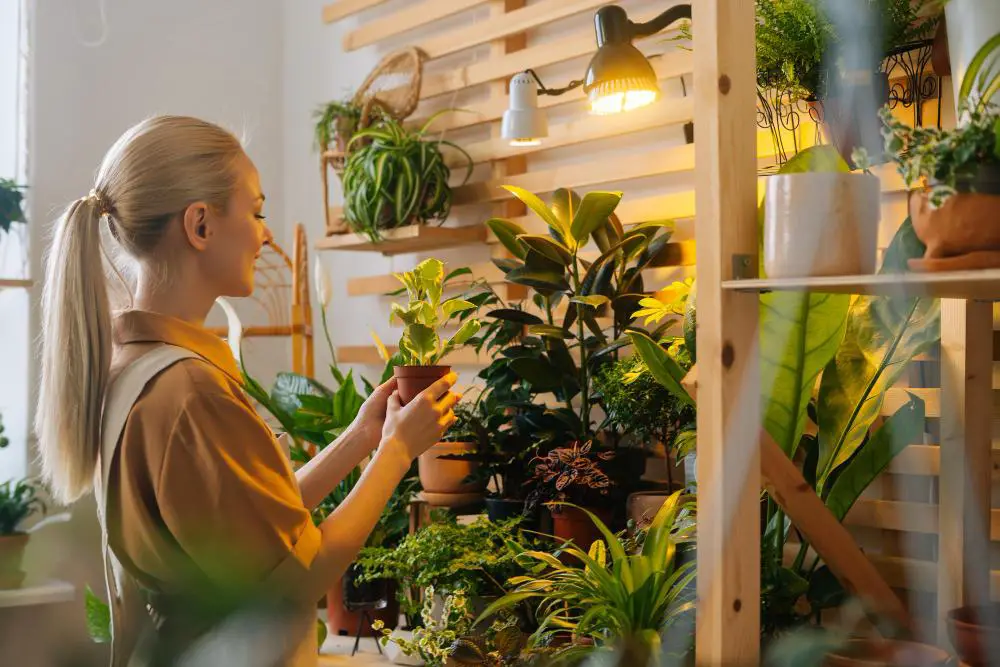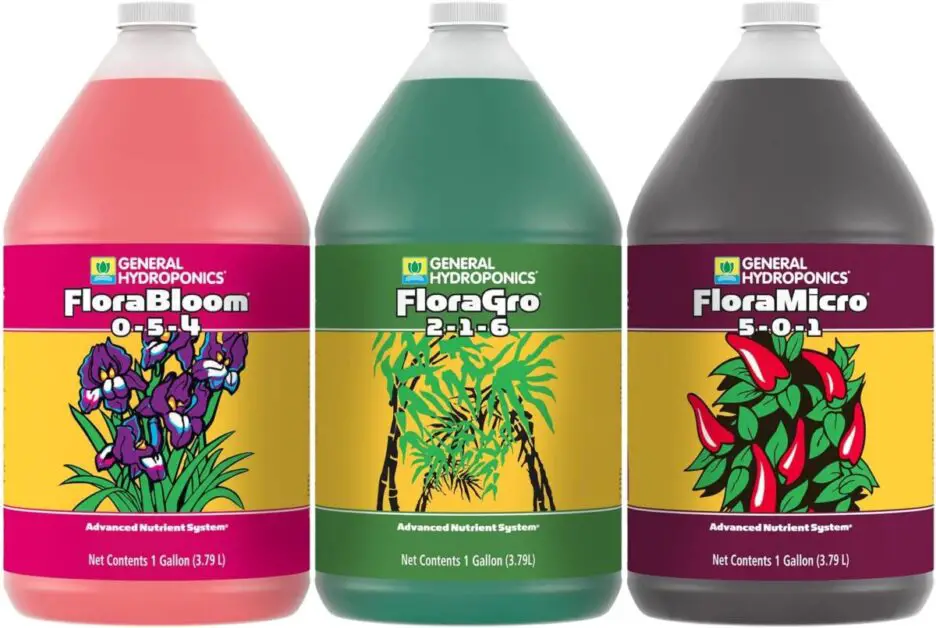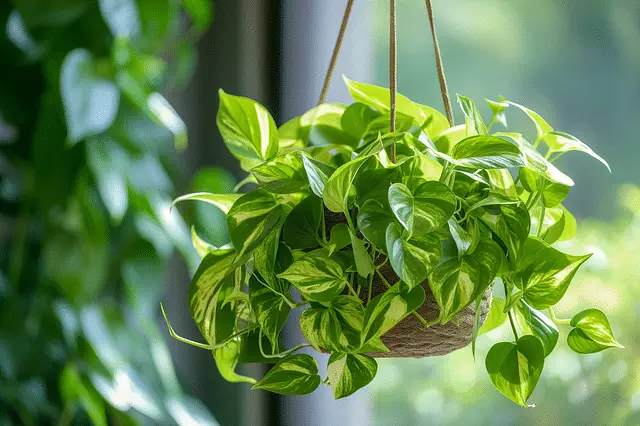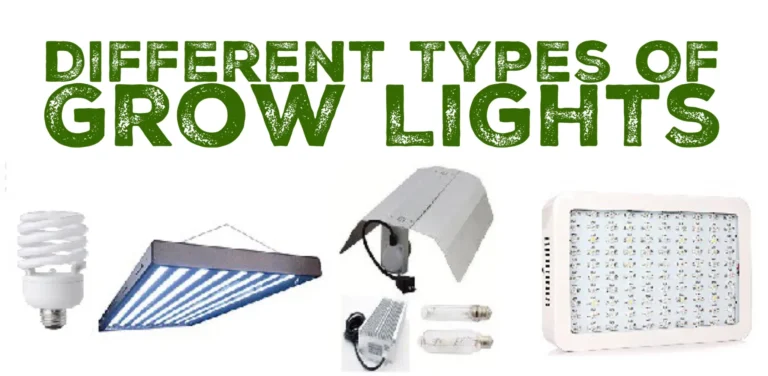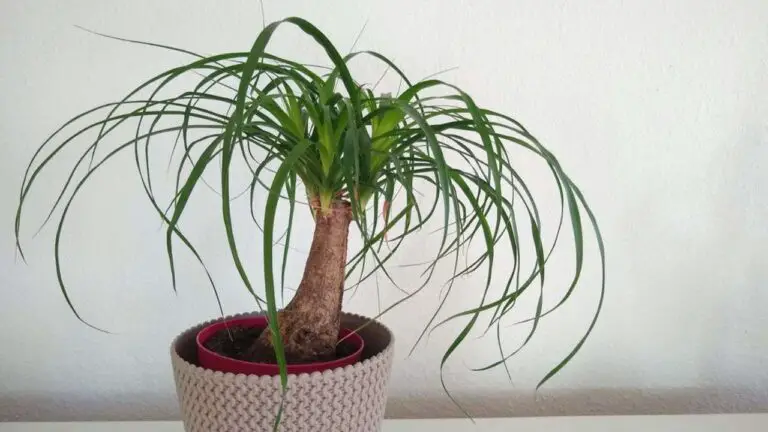Hydroponic Garden Indoor: Tips and Tricks to Avoid Common Problems
Welcome to the exciting world of indoor hydroponic gardening! Did you know that hydroponic systems use up to 90% less water than traditional soil gardening? If you’re ready to dive into this innovative method of growing plants without soil, you’ve come to the right place. In this guide, we’ll explore essential tips and tricks to help you avoid common pitfalls and maximize your indoor garden’s success.
From choosing the right system to troubleshooting issues like nutrient deficiencies and pests, we’ve got you covered. Whether you’re a beginner or a seasoned pro, our expert advice will ensure your hydroponic garden thrives. Let’s get growing!
Table of Contents
Understanding the Basics of Hydroponic Garden Indoors
Hydroponic gardening indoors is a modern and innovative way to grow plants without the need for soil. Instead, plants are grown in a nutrient-rich solution that is directly delivered to their roots. This method offers numerous benefits, making it increasingly popular among gardening enthusiasts.
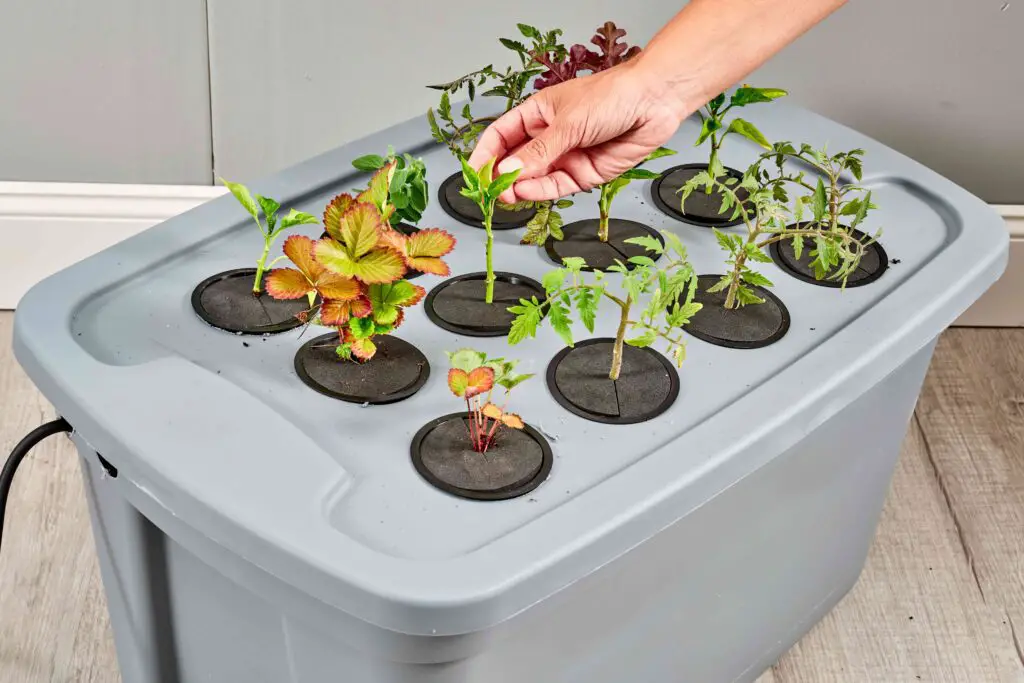
- Controlled Growing Environment: Eliminate soil for a clean, sterile system, minimizing the risk of pests and diseases.
- Customizable Factors: Adjust lighting, temperature, humidity, and nutrient levels to meet your plants’ exact needs, promoting faster growth and higher yields.
- Year-Round Growing: Overcome seasonal limitations and cultivate plants indoors, ensuring a fresh supply of produce regardless of the time of year.
- Efficient Resource Utilization: Optimize resource usage with precise control over environmental factors, resulting in more efficient water and nutrient use.
- Freedom to Experiment: Explore different growing techniques and plant varieties without being confined by outdoor conditions, fostering innovation and learning.
Choosing the Right Location for Your Indoor Hydroponic Garden
Choosing the right location for your indoor hydroponic garden is crucial for the success of your plants. When deciding on a location, there are several factors to consider.
- Sunlight or Artificial Lighting: Ensure the area receives at least six hours of direct light daily. Choose a sunny window or invest in grow lights for adequate illumination.
- Temperature and Humidity Control: Maintain temperatures between 65 to 80°F (18 to 27°C) and humidity levels around 50 to 60%. Avoid drafty areas or places near heating/cooling sources to prevent fluctuations.
- Consistent Conditions: Select a location that can consistently provide the desired temperature and humidity levels to support healthy plant growth.
- Convenience and Accessibility: Choose a spot that is easily accessible for regular maintenance tasks like watering, monitoring plant growth, and performing maintenance. This ensures a hassle-free gardening experience.
By carefully considering these factors, you can choose the perfect location for your indoor hydroponic garden and create an environment that promotes healthy plant growth.
Selecting the Appropriate Hydroponic System for Your Indoor Garden
When it comes to hydroponic gardening, selecting the appropriate hydroponic system for your indoor garden is crucial. With a variety of options available, it’s important to choose a system that suits your space, plants, and level of gardening expertise.
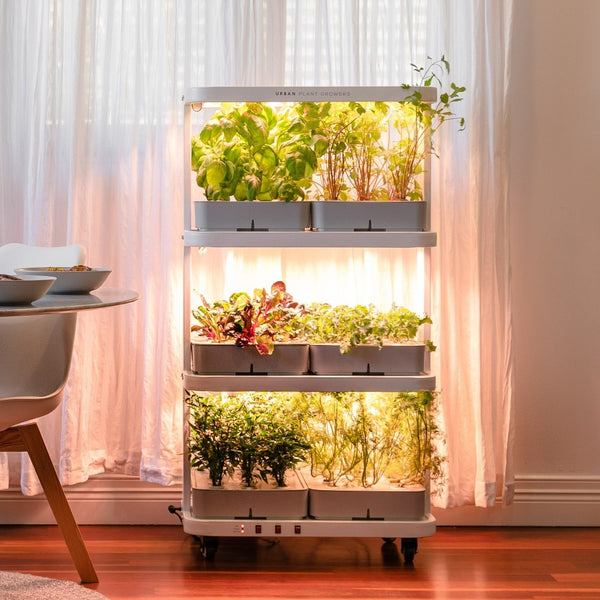
Ultimately, the best hydroponic system for your indoor garden will depend on factors such as space availability, plant types, desired level of maintenance, and personal preferences. Carefully considering these factors will help ensure a successful and thriving hydroponic garden in your indoor space.
Determining the Ideal Lighting Conditions for Your Indoor Hydroponic Garden
Determining the ideal lighting conditions for your indoor hydroponic garden is crucial to the success of your plants. Light is one of the primary factors that affect plant growth, and providing the right amount and quality of light can make a significant difference in your harvest.
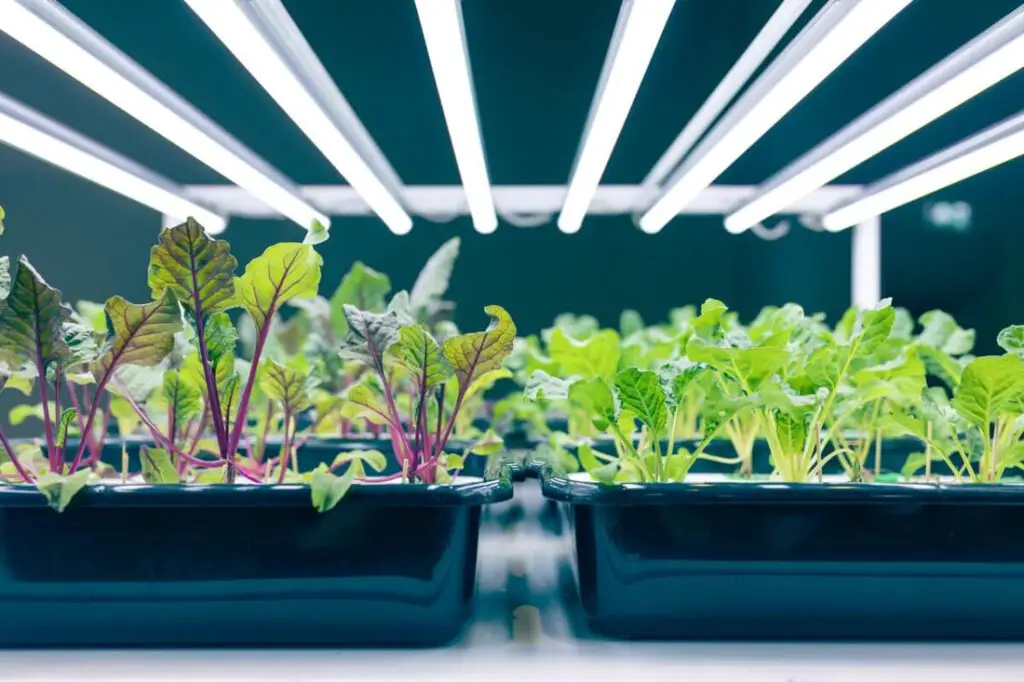
- Natural Light: Utilize sunlight if available in a sunny location for cost-effective and energy-efficient lighting. However, consider variations in intensity and duration based on season and weather.
- Artificial Lighting Systems: LED or fluorescent lights offer control over light spectrum and intensity. LED lights, known for energy efficiency and adjustability, are popular among indoor gardeners.
- Consider Plant Requirements: Assess your plants’ specific light needs, including intensity and spectrum, for each growth stage. Choose lighting accordingly to meet these requirements.
- Calculate Light Output: Determine the total light output required based on garden size to ensure even coverage and optimal growth conditions for all plants.
- Optimization for Growth: By providing the right amount and quality of light, you can create an optimized environment for your plants to thrive, leading to exceptional growth and productivity.
Review of LED Grow Lights, Full Spectrum for Indoor Plants
I recently added these full spectrum LED grow lights to my indoor hydroponic setup, and they’ve made a significant difference in my plant growth. The full spectrum light provides balanced illumination, catering to all stages of plant growth, from seedlings to flowering. I particularly appreciate the 5-level dimmable settings, which allow me to adjust the brightness according to the specific needs of my plants.
These lights are energy efficient, consuming less power compared to traditional fluorescent lights, and their compact design fits perfectly in my limited indoor space. The long lifespan and minimal maintenance are additional benefits that make these lights a great investment for any indoor gardener.
However, the initial cost is higher than basic fluorescent options, and they can generate some heat, necessitating good ventilation. The coverage area is somewhat limited, so for larger setups, multiple units might be required. Additionally, the initial setup was a bit tricky, especially for someone new to indoor gardening. Despite these minor drawbacks, the overall performance and benefits of these LED grow lights make them a valuable addition to my indoor garden.
- Full Spectrum Light: Provides a balanced spectrum for all stages of plant growth.
- Adjustable Brightness: Features 5-level dimmable settings to suit different plant needs.
- Energy Efficient: Uses less power compared to traditional fluorescent lights.
- Compact Design: Space-saving and easy to install in various indoor setups.
- Durable: Long lifespan with minimal maintenance required.
- Price: Higher initial cost compared to basic fluorescent lights.
- Heat Generation: Can produce heat, requiring proper ventilation.
- Coverage Area: Limited coverage area, may need multiple units for larger spaces.
- Setup Complexity: Initial setup can be tricky for beginners.
- Light Intensity: May not be as powerful as high-end grow lights.
Maintaining Proper Temperature and Humidity Levels in Your Indoor Hydroponic Garden
Temperature directly affects the metabolic rate of plants, influencing their growth, development, and overall productivity. Generally, the optimal temperature range for most hydroponic plants is between 70°F and 78°F (21°C and 26°C). However, it’s important to note that different plant species may have varying temperature requirements, so it is best to research the specific needs of the plants you are growing.
Temperature Control:
- Optimal Range: Maintain temperature between 70°F and 78°F (21°C and 26°C) for most hydroponic plants.
- Species Variability: Research specific temperature requirements for different plant species to ensure optimal growth.
- Monitoring: Use a thermometer to regularly monitor the temperature in your grow area.
- Adjustments: Use heaters or adjust ambient room temperature to raise temperatures if they fall below the desired range. Use fans or air conditioning units to cool down the area if temperatures exceed the optimal range.
- Consistency: Ensure consistent temperatures to avoid stress on plants and promote healthy growth.
Humidity Management:
- Ideal Range: Maintain humidity levels between 50% and 70% for most hydroponic plants.
- Stage-Specific Needs: Consider different humidity requirements during various growth stages, such as seed germination and flowering.
- Monitoring: Use a hygrometer to monitor humidity levels in the grow area.
- Adjustments: Increase humidity with humidifiers or water-filled trays if levels are too low. Decrease humidity with dehumidifiers or increased airflow if levels are too high.
- Balanced Environment: Achieve a balance of temperature and humidity to create an optimal growing environment where plants can thrive and maximize productivity.
Nutrient Management: Providing Essential Nutrients for Healthy Plant Growth
As a gardener, it is crucial to understand the importance of nutrient management in hydroponic gardening for ensuring healthy plant growth. In a hydroponic system, plants rely on nutrient solutions to meet their nutritional needs as opposed to traditional soil-based gardening. By providing essential nutrients in the right quantities and proportions, you can create optimal conditions for your indoor hydroponic garden to thrive.
- Understand Plant Nutritional Requirements:
- Monitor Nutrient Levels:
- Maintain Proper pH:
- Provide the right nutrients and maintain proper pH to maximize plant nutrient uptake and minimize the risk of deficiencies or toxicities.
- The ideal pH range for most plants is between 5.5 and 6.5.
- Adjust Nutrient Levels as Needed:
By following these guidelines and regularly monitoring and adjusting nutrient levels, you can create an optimal environment for healthy plant growth and productivity in your indoor hydroponic garden.
The following table explain about nutrient management: providing essential nutrients for healthy plant growth
| Aspect | Importance | Key Considerations and Practices |
| Nutrient Solutions | Essential for plant growth in hydroponic systems | Provide a balanced nutrient solution with appropriate ratios of macronutrients and micronutrients |
| Plant Nutritional Requirements | Understanding the specific needs of different plants | Different plant species have varying requirements for macronutrients and micronutrients |
| Macronutrients (N-P-K) | Key elements for plant development and function | Nitrogen (N), phosphorus (P), and potassium (K) are crucial for photosynthesis, flowering, and fruiting |
| Micronutrients | Trace elements essential for various plant functions | Iron (Fe), zinc (Zn), manganese (Mn), and others play roles in enzyme activation and metabolic processes |
| Nutrient Monitoring | Regular testing and analysis of nutrient levels | Use tools like electrical conductivity (EC) and pH meters to monitor and adjust nutrient concentrations |
| pH Balance | Influences nutrient availability and uptake | Maintain optimal pH levels for your specific crops (typically 5.5 to 6.5) to ensure nutrient availability |
| Adjustments and Corrections | Making necessary changes based on monitoring results | Adjust nutrient concentrations and pH as needed to prevent deficiencies or toxicities |
| Maximizing Nutrient Uptake | Optimizing conditions for plants to absorb nutrients efficiently | Provide the right nutrients in the right amounts to maximize nutrient uptake by plants |
| Preventing Deficiencies and Toxicities | Minimizing the risk of nutrient imbalances that can harm plant health | – Regular monitoring helps identify issues early, preventing deficiencies or toxicities |
| Optimal Plant Health and Productivity | Creating an environment that promotes vigorous growth and high yields | Proper nutrient management contributes to overall plant health and productivity |
Review of General Hydroponics Flora Series Fertilizer
I’ve been using the General Hydroponics Flora Series Fertilizer for my indoor hydroponic garden, and the results have been impressive. This nutrient solution provides balanced nutrition essential for all stages of plant growth, from seedlings to harvest. The ability to customize the nutrient ratios by mixing different components allows me to tailor the solution to the specific needs of my plants, ensuring they receive optimal care.
One of the standout features is its high solubility, which makes it easy to dissolve in water, ensuring effective nutrient delivery to the plants. Whether you’re using a hydroponic system or traditional soil gardening, this versatile fertilizer fits seamlessly into various setups. The results speak for themselves—my plants are healthier and more vigorous since I started using this product.
However, it’s worth noting that the cost is higher compared to some other nutrient solutions on the market. Additionally, achieving the best results requires precise mixing and frequent monitoring of pH and EC levels, which can be a bit daunting for beginners. The solution also has a strong odor, and once mixed, it has a limited shelf life.
Despite these minor drawbacks, the General Hydroponics Flora Series Fertilizer has proven to be a reliable and effective nutrient solution, earning its place as a trusted brand in the hydroponics community.
✅ Customizable Ratios: Allows mixing to suit specific plant needs.
✅ High Solubility: Easily dissolves in water for effective nutrient delivery.
✅ Versatile Use: Suitable for various hydroponic setups and soil gardening.
✅ Consistent Results: Promotes healthy, vigorous plant growth.
✅ Trusted Brand: Well-known and widely used in the hydroponics community.
❌ Complex Mixing: Requires precise measurements for optimal results.
❌ Frequent Monitoring: Needs regular pH and EC monitoring.
❌ Strong Smell: Can have a noticeable odor.
❌ Shelf Life: Limited shelf life once mixed.
❌ Availability: May not be available in all local stores.
Preventing and Managing Pests and Diseases in Your Indoor Hydroponic Garden
Preventing and managing pests and diseases is crucial for the success of your indoor hydroponic garden. By implementing proper preventive measures and effective management strategies, you can ensure the health and vitality of your plants.
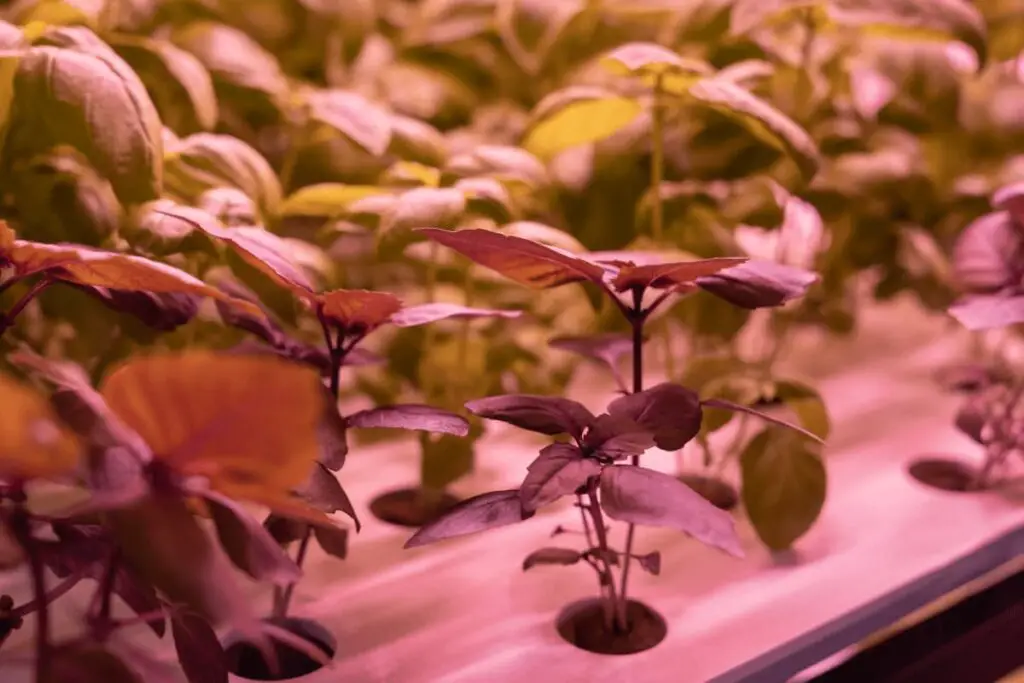
Vigilant Monitoring:
- Regular Inspections: Routinely check plants and surroundings for signs of pests and diseases.
- Identify Common Pests: Look for aphids, spider mites, whiteflies, and symptoms of diseases like leaf spots and wilting.
- Early Detection: Detect issues early to take prompt action and prevent further damage.
Organic Pest Management:
- Beneficial Insects: Introduce natural predators like ladybugs and lacewings to control common pests without chemicals.
- Sanitation Practices: Maintain cleanliness by removing dead plant material and regularly cleaning hydroponic systems to minimize pest and disease spread.
Conclusion:
- Proactive Approach: By closely monitoring plants, implementing organic pest management, and maintaining cleanliness, you can effectively prevent and manage pests and diseases.
- Health and Productivity: Taking proactive steps ensures the health and productivity of your plants, leading to a successful indoor hydroponic gardening experience.
Maintaining Proper pH Levels in Your Hydroponic System
Maintaining the proper pH levels in your hydroponic system is crucial for the healthy growth and development of your plants. pH refers to the acidity or alkalinity of the nutrient solution in your system, and it directly affects the availability of essential nutrients to your plants. Most hydroponic plants thrive in a slightly acidic or neutral pH range, between 5.5 and 6.5.
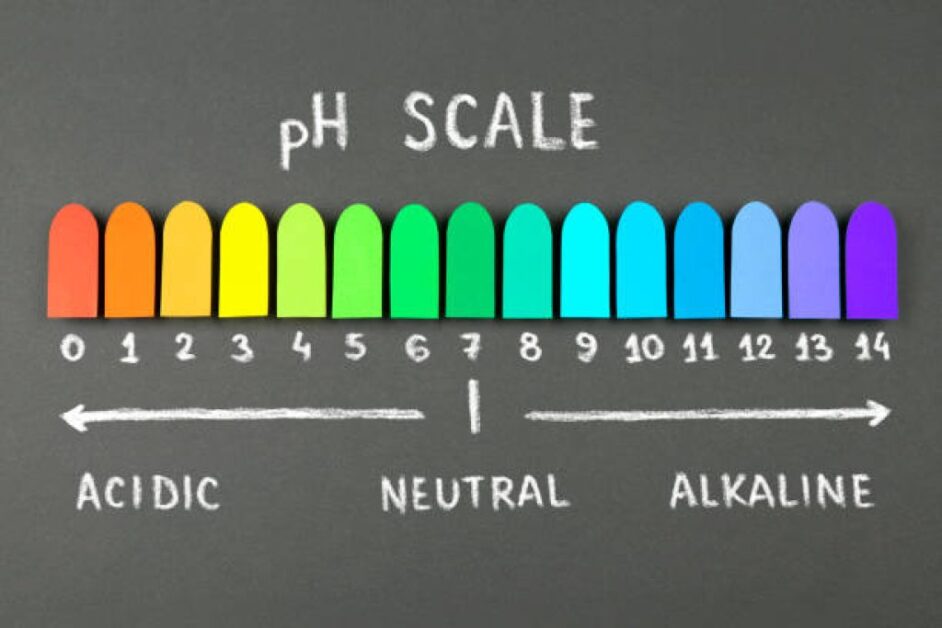
- Monitor pH Levels:
- Adjust pH Levels:
- Consider Plant Species:
- Maintain Optimal pH Range:
By following these guidelines, you can ensure that your hydroponic system maintains optimal pH levels, allowing your plants to effectively absorb and utilize nutrients for robust growth.
Water Quality and Management: Ensuring Optimal Health for Your Indoor Plants
Water quality and management are crucial factors in ensuring the optimal health and growth of your indoor plants in a hydroponic system. By maintaining proper water quality, you can provide your plants with the necessary nutrients and prevent potential issues that could hinder their development.
pH Level Maintenance:
- Optimal Range: Maintain pH levels between 5.5 to 6.5 for most plants.
- Regular Testing: Use pH testing kits or meters to monitor and adjust pH levels as needed.
- Nutrient Availability: Ensure nutrients in the water remain readily available to plants by maintaining proper pH balance.
Water Quality Factors:
- Mineral Content: Ensure water is free from excessive mineral content, which can affect plant health.
- Dissolved Oxygen Levels: Monitor oxygen levels to promote healthy root development and prevent root rot.
- Contaminant-Free: Use clean, filtered water free from contaminants, chlorine, and harmful substances.
- Water Purification: Consider using reverse osmosis systems or water purifiers to eliminate impurities and maintain high-quality water.
System Maintenance:
- Regular Inspection: Check for clogs, blockages, and overall system health to prevent issues.
- Reservoir Cleaning: Clean the reservoir regularly to prevent buildup of algae and bacteria.
- Plant Health Check: Monitor plant health to detect any signs of stress or nutrient deficiencies early on.
Conclusion:
- Optimal Environment: By monitoring and adjusting pH levels, ensuring water quality, and maintaining the hydroponic system, you can create an optimal environment for vigorous growth and healthy plants in your indoor garden.
Proper Plant Selection and Care for Indoor Hydroponic Gardening
When it comes to indoor hydroponic gardening, selecting the right plants is crucial for successful cultivation. Not all plants are suitable for this growing method, as some require specific environmental conditions that may be difficult to maintain indoors. Therefore, it is important to choose plants that are well-suited for the controlled environment of a hydroponic system.
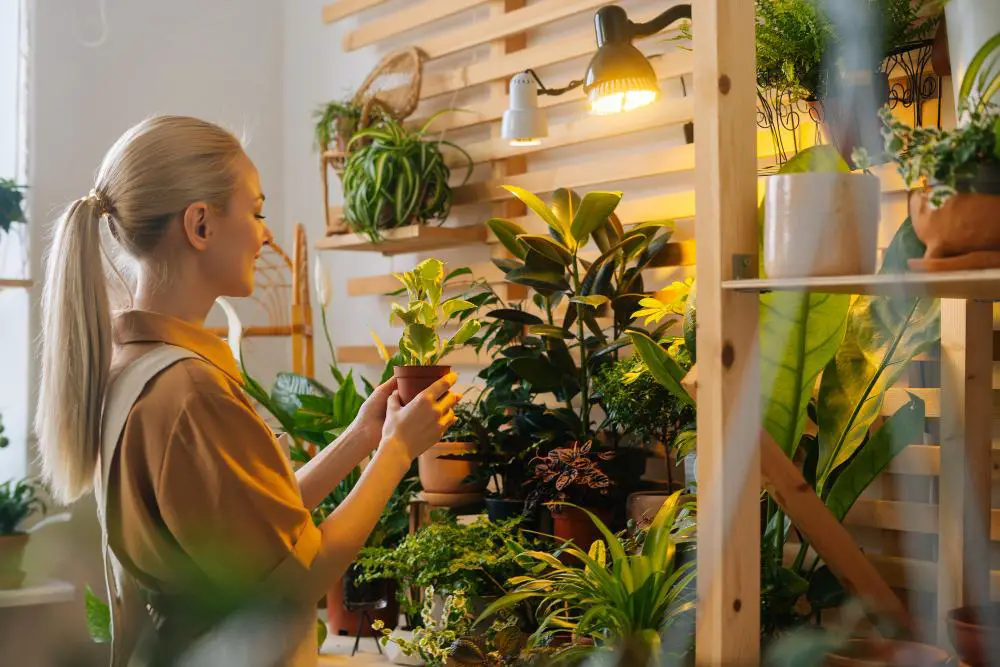
- Root System Size:
- Consider the size of the root system when selecting plants for indoor hydroponics. Plants with smaller root systems, such as lettuce, herbs, and strawberries, are ideal for indoor hydroponic.
- Growth Cycle:
- Nutrient Intake:
- pH Levels:
- Calibrate and adjust the pH levels of the nutrient solution to ensure optimal conditions for plant growth. Variations in pH can affect the plants’ ability to absorb nutrients.
- Water Quality:
By following these guidelines, indoor hydroponic gardeners can create an optimal environment for their plants to thrive and produce a continuous yield throughout the year.
Regular Monitoring and Maintenance of Your Indoor Hydroponic Garden
Regular monitoring and maintenance are crucial aspects of ensuring the long-term success of your indoor hydroponic garden. By regularly observing and examining your plants, you can spot any signs of nutrient deficiencies, pest infestations, or other issues before they become major problems. This allows you to take immediate action and prevent potential damage to your plants.
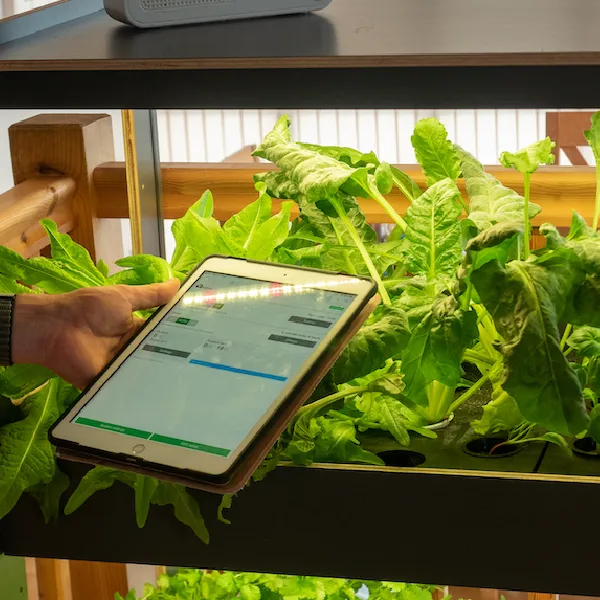
Visual Inspections:
- Overall Plant Health: Check for yellowing leaves, stunted growth, or wilting, which may indicate nutrient imbalances, temperature fluctuations, or inadequate lighting.
- Pest and Disease Inspection: Look for signs of pests like aphids, spider mites, or diseases such as powdery mildew. Early detection is crucial for preventing infestations and diseases from spreading.
pH and Nutrient Levels:
- pH Monitoring: Use a reliable pH meter to regularly monitor and maintain the correct pH range specific to your plants’ requirements for optimal nutrient uptake.
- Nutrient Solution Testing: Regularly test and adjust the nutrient solution to ensure plants receive necessary nutrients for healthy growth.
Prompt Action:
- Early Detection: Detect issues early through regular monitoring to take prompt action and prevent further damage.
- Treatment: Treat any nutrient deficiencies, imbalances, pest infestations, or diseases promptly to maintain plant health and prevent spread within the hydroponic system.
Proper monitoring and adjustment of these factors will minimize the risk of nutrient deficiencies or toxicities, maximizing the health and productivity of your indoor garden. Stay tuned for our next section, where we will delve deeper into troubleshooting common problems that may arise in your indoor hydroponic garden.
Troubleshooting Common Problems in Your Indoor Hydroponic Garden
Troubleshooting common problems in your indoor hydroponic garden is an essential skill for any gardening enthusiast. Despite using advanced techniques and technology, occasional issues can arise that require attention and intervention.
- Nutrient Deficiency or Imbalance:
- Pest Infestation:
- Regularly inspect plants for signs of pests like aphids, whiteflies, or spider mites, including yellowing leaves, sticky residue, or crawling insects.
- Implement integrated pest management techniques, such as introducing beneficial insects or using organic insecticidal soaps, to control and prevent pest outbreaks.
- Maintain proper hygiene by cleaning equipment and sanitizing the environment to minimize the risk of pest infestations in your indoor garden.
By following these guidelines, indoor hydroponic gardeners can effectively address nutrient deficiencies, imbalances, and pest infestations, ensuring healthy plant growth and a thriving garden environment.
Learn more about it the given video: Hydroponic Garden Indoor Tips and Tricks to Avoid Common Problems
FAQ
How often should I monitor and maintain my indoor hydroponic garden?
Regular monitoring and maintenance of your indoor hydroponic garden should be done on a daily basis to ensure optimal plant health and productivity.
What are some common problems that can occur in an indoor hydroponic garden?
Some common problems in an indoor hydroponic garden include nutrient deficiencies, pH imbalances, pest infestations, and diseases.
How can I prevent and manage pests and diseases in my indoor hydroponic garden?
To prevent and manage pests and diseases, you can implement proper sanitation practices, use organic pest control methods, and regularly inspect your plants for any signs of infestation or disease.
How can I maintain proper pH levels in my hydroponic system?
To maintain proper pH levels, you can regularly test and adjust the pH level of your nutrient solution using pH testing kits and pH adjusters.
What factors should I consider when selecting the appropriate hydroponic system for my indoor garden?
When selecting a hydroponic system, you should consider factors such as the space available, the number of plants you want to grow, and your level of experience in hydroponic gardening.
How do I determine the ideal lighting conditions for my indoor hydroponic garden?
The ideal lighting conditions for your indoor hydroponic garden can be determined by considering the light requirements of the specific plants you are growing and providing them with the appropriate intensity and duration of light.
What should I do if I notice nutrient deficiencies in my plants?
If you notice nutrient deficiencies in your plants, you can adjust the nutrient solution by adding the specific nutrient that is lacking or using a complete hydroponic fertilizer.
How can I ensure optimal water quality and management in my indoor hydroponic garden?
To ensure optimal water quality, you should use clean, filtered water and regularly monitor and adjust the nutrient concentration in your solution. Additionally, you can implement water management techniques such as recycling and maintaining proper oxygenation.
Can I grow any type of plant in an indoor hydroponic garden?
While many plants can thrive in an indoor hydroponic garden, some plants may have specific requirements or may not be suitable for hydroponic cultivation. It is important to research and select plants that are well-suited for hydroponic gardening.
How can I troubleshoot common problems in my indoor hydroponic garden?
To troubleshoot common problems, you should carefully observe your plants for any signs of stress or issues, identify the problem, and take appropriate actions such as adjusting nutrient levels, pH, or lighting conditions. Additionally, consulting resources or seeking expert advice can also help in troubleshooting specific issues.

Studied Agricultural Engineering-Plant Protection at University of California, Davis.
Head of Content writing team at Southelmontehydroponics.com

